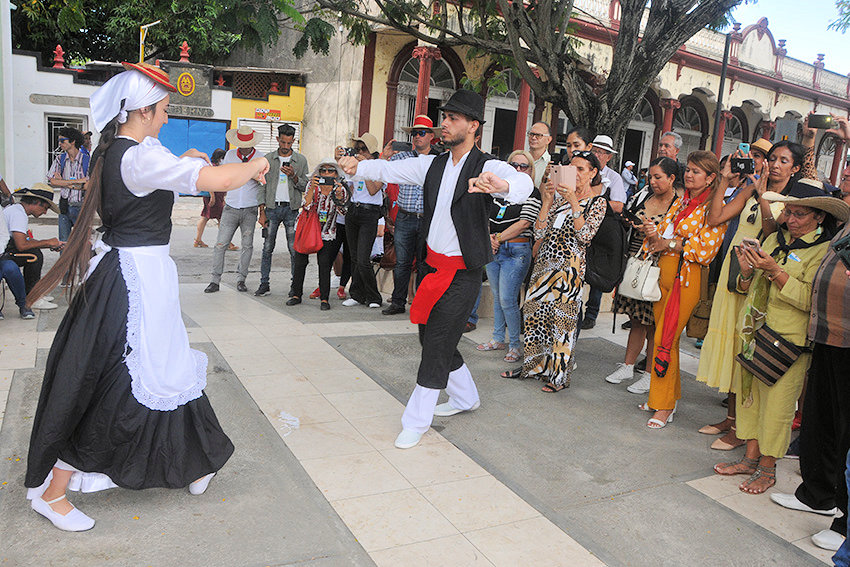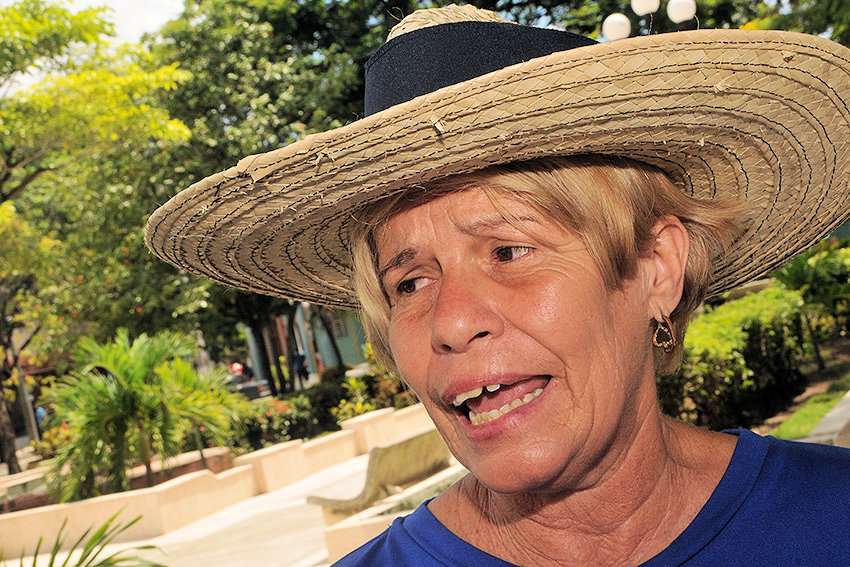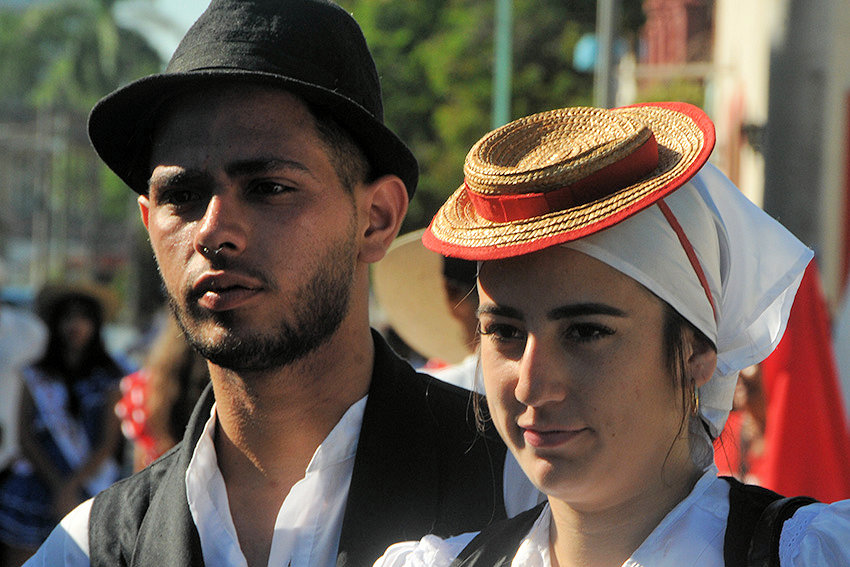
An important participation in this 58th edition of the Cucalambeana Fiesta is the Canarian Association of Cabaiguán, from the province of Sancti Spíritus, whose members -after 20 years away from this festival of the Cuban peasantry-, decided to join again to show a little of their dances, costumes, and culinary.
Las Tunas, Cuba.- Cabaiguán is one of the Cuban towns with the greatest influence of Canarian culture on the Island, due to the large number of immigrants from that region that it received in the first decades of the 20th century, which led to great economic and demographic change.
 In 1992, we founded the association in Cabaiguán and since then we have been rescuing the identity values, the traditions, not only the dances, as is the case of the sample that we brought with the Danza Isleña de Poza; we also have weaving groups, embroidery, we make traditional meals," Felicia Vilma Estepa Valdivia, leader of this artistic group, explained to 26.
In 1992, we founded the association in Cabaiguán and since then we have been rescuing the identity values, the traditions, not only the dances, as is the case of the sample that we brought with the Danza Isleña de Poza; we also have weaving groups, embroidery, we make traditional meals," Felicia Vilma Estepa Valdivia, leader of this artistic group, explained to 26.
The satisfaction of visiting Las Tunas again is evident. The call made by the El Cucalambé Ibero-American Décima Center is a sign of the evident need to show all the cultures that came together in the Cuban fields.
"We need to be here, the Canarian traditions cannot be separated from the Cuban identity, and more specifically from the peasant identity; each place has its characteristics, but the Canarians -to a greater or lesser extent- have always been present in the peasant traditions.
The name of Danza Isleña de Poza is due to a rural area that is called Las Pozas, precisely, and was founded by an immigrant named Don José Garcés. He arrived there in 1919 and was nourished by the entire cultural fabric of the place and, at the same time, transmitted the Canarian folklore.
"In this place, many learned about our agriculture, and they were able to take it back; others simply could not see their family again and it was the case of Don José. I think we have been a respectful group in maintaining all that legacy that he transmitted to us; it identifies us and is our true history.”
This group, made up of great-grandchildren and great-great-grandchildren of José Garcés, as well as the inhabitants of the community; demonstrates the deep sense of belonging of the inhabitants of the rural community. A sample of that huge love for their own and the traditions brought them, guided by the president of the National Union of Writers and Artists of Cuba (UNEAC), and the Canarian Association of Cabaiguán, Mario Luis López Isla.
